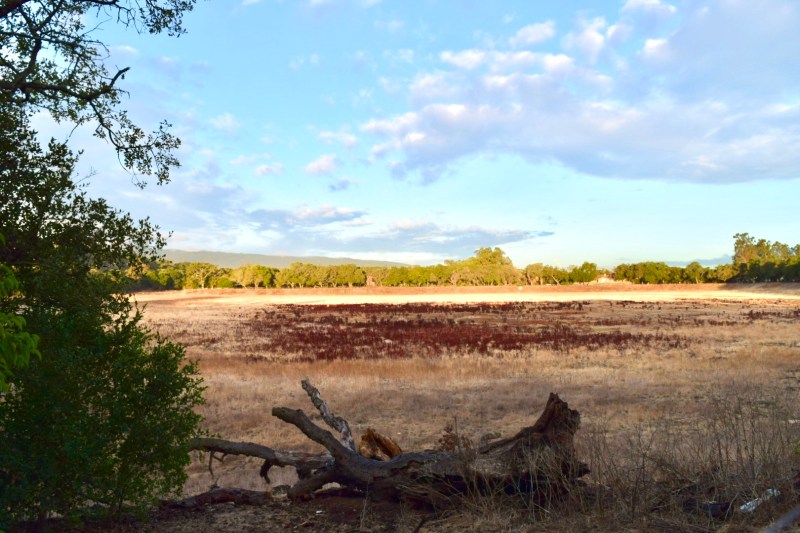With the Bay Area’s ongoing storms and heavy rainfall, Lake Lagunita’s dry spell has come to an end. But this marks the first time that many current students have ever seen the normally-dry basin, colloquially known as Lake Lag, with any water in it.
Stanford has not artificially filled the lake for recreational purposes since 2001. Lake Lag was previously filled with water and hosted a variety of recreational activities, including windsurfing, sunbathing, sailing and rubber rafting. The lake was even a staple of Stanford traditions like the Water Carnival and Big Game bonfire.
The current level of water is likely temporary. Lake Lag loses an estimated 500 gallons per minute to the surrounding underground area due to its permeable lakebed, and the University will not keep it filled for recreation like they used to.
Many students believe that Lake Lag is kept empty to avoid harming the California tiger salamander, a federal- and state-protected species.
However, “tiger salamanders require water and contrary to a widespread rumor are not the reason why the reservoir is not filled to former recreational levels,” wrote University spokesperson Luisa Rapport in a statement to The Daily.
The Stanford Habitat Conservation Plan states that “Stanford will operate its water systems to maintain a depth of 3 to 5 feet” to support California tiger salamander larva development between February and May. After May, Stanford will mimic natural drying and gradually reduce the water level.
The low level of water was to protect the steelhead trout population, Rapport wrote.
Stanford used to divert water from the San Francisquito Creek, one of the last and best steelhead runs in the south Bay Area, to fill Lake Lag. Filling Lake Lag for recreational purposes would put excessive strain on declining steelhead trout populations in the San Francisquito Creek, according to Rapport.
To conserve water in the run, Stanford reduced creek diversions and timed them for high creek flow periods. “Both steelhead and California tiger salamander have benefitted from this conservation approach,” Rapport wrote.
Ongoing drought in California is another common theory for why Lake Lagunita is not artificially filled to recreational levels.
Gus Robinson ’25 said there are “rumors about the salamanders, but I’m pretty sure it’s due to the drought. They took it away right as the drought started and aren’t very invested in restoring it.”
According to Stanford Conservation Program Manager Esther Cole Adelsheim and Director of Conservation Planning Alan Launer, the drought influences Lake Lag’s maintenance. “Since its creation, Lagunita did not receive supplemental water in dry years,” Adelsheim and Launer wrote.
Lake Lag’s low water levels — filled enough for conservation purposes but not for recreation — are unlikely to change.
The current approach will continue “for at least the next 42 years — the duration of Stanford’s federal and state Endangered Species Act,” Rapport wrote. During that time, the reservoir remains available for academic use. Students or researchers can apply for access via the Foothills Use Committee.
If diversions from the San Francisquito Creek to support the salamanders would harm the steelhead trout, “Stanford will provide supplemental water from Felt Reservoir, water wells, or other nonpotable water sources,” according to Stanford’s Habitat Conservation Plan. The plan does not address whether alternative sources could be used to fill Lake Lag for recreational activities.
“There was, and still is, considerable University-wide discussion about the appropriate use of water resources and potential to fill Lagunita to recreational levels,” Adelsheim and Launer wrote.
But according to Rapport, “use of the Lagunita reservoir-bed for recreation is a thing of the past.”
